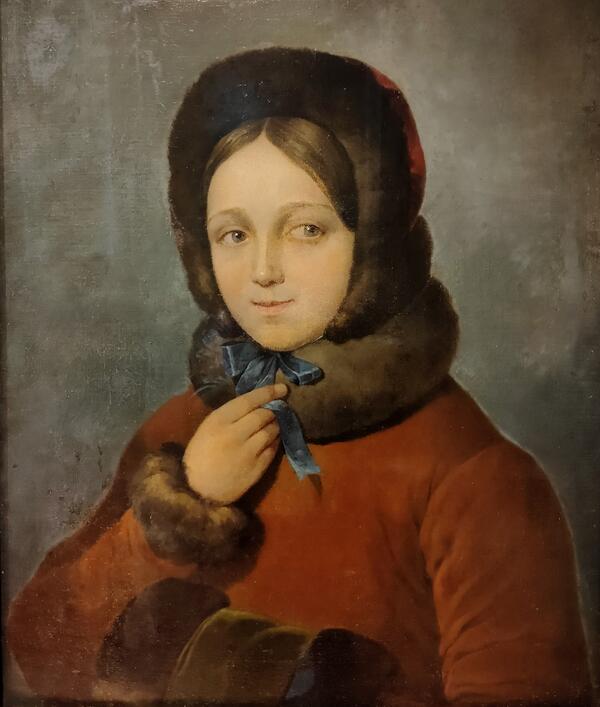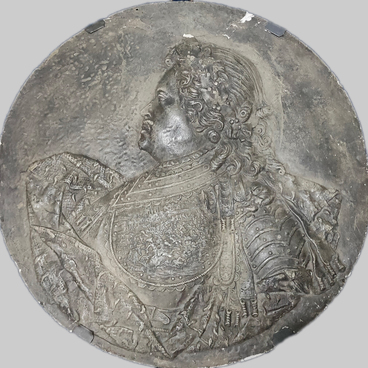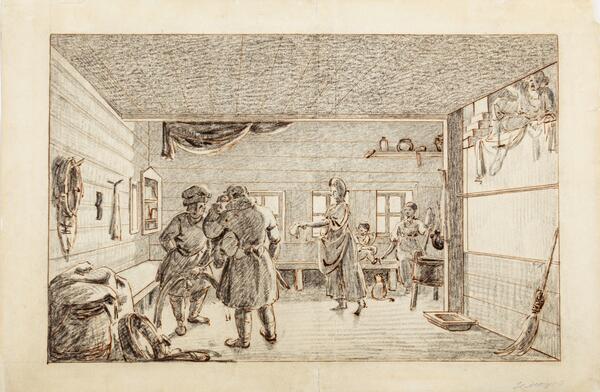Kapiton Zelentsov painted the piece ‘Girl in Fur Coat’ in the 1840s. He portrayed a young damsel in warm winter clothes. The girl gazes somewhere into the distance, and unconsciously fingers the ends of the ribbon from the cap. This touching detail emphasized the dreamy character of the central figure. Unfortunately, researchers were unable to find out who exactly posed for the artist.
The painter constructed the coloring of the picture on warm shades. He chose a calm background for the portrait, against which the girl’s brown-red fur coat stands out well. At the same time, he added barely noticeable green and red accents to the background color in order to subordinate the picture to a single color system. So we get the impression that the girl in a fur coat seems to be against the background of a real wall and harmoniously fits into the space. The artist also paid great attention to the texture of the materials — the difference between the soft fur on the collar and the shiny satin ribbon next to it is especially noticeable.
Kapiton Zelentsov lived from 1790 to 1845. His father was the owner of three large factories in the Urals. In the first quarter of the 19th century, the artist served in the Ministry of Internal Affairs, and then moved to the personal department of the Russian emperor. Already at that time, he developed as an amateur artist, and painted in his spare time. In particular, during the Patriotic War of 1812, the painter created a series of “lubok” caricatures of the French.
Apparently, his talent was noticed by the highest people, and as a result, the artist got to study with the famous Alexei Venetsianov, from whose ideas the “Venetsianov school” grew. The Venetsianov school refers to the works of artists who followed the principles of the maestro and reflected in their paintings the simple and at the same time poetic life of the people. They painted urban and rural landscapes, interiors, still lifes. The Venetsianovs especially loved the theme of peasant life. It is believed that realism in Russian art grew out of this school.
Kapiton Zelentsov belonged to one of the first generations of Russian realists. Researchers even attribute some of his works to hyperrealism — this is the name of the artistic manner that looks more like photography than painting. In the 1830s–1840s, the artist painted interiors and portraits. It is believed that he made his most valuable contribution to art with his colorful interiors.
The painter constructed the coloring of the picture on warm shades. He chose a calm background for the portrait, against which the girl’s brown-red fur coat stands out well. At the same time, he added barely noticeable green and red accents to the background color in order to subordinate the picture to a single color system. So we get the impression that the girl in a fur coat seems to be against the background of a real wall and harmoniously fits into the space. The artist also paid great attention to the texture of the materials — the difference between the soft fur on the collar and the shiny satin ribbon next to it is especially noticeable.
Kapiton Zelentsov lived from 1790 to 1845. His father was the owner of three large factories in the Urals. In the first quarter of the 19th century, the artist served in the Ministry of Internal Affairs, and then moved to the personal department of the Russian emperor. Already at that time, he developed as an amateur artist, and painted in his spare time. In particular, during the Patriotic War of 1812, the painter created a series of “lubok” caricatures of the French.
Apparently, his talent was noticed by the highest people, and as a result, the artist got to study with the famous Alexei Venetsianov, from whose ideas the “Venetsianov school” grew. The Venetsianov school refers to the works of artists who followed the principles of the maestro and reflected in their paintings the simple and at the same time poetic life of the people. They painted urban and rural landscapes, interiors, still lifes. The Venetsianovs especially loved the theme of peasant life. It is believed that realism in Russian art grew out of this school.
Kapiton Zelentsov belonged to one of the first generations of Russian realists. Researchers even attribute some of his works to hyperrealism — this is the name of the artistic manner that looks more like photography than painting. In the 1830s–1840s, the artist painted interiors and portraits. It is believed that he made his most valuable contribution to art with his colorful interiors.




